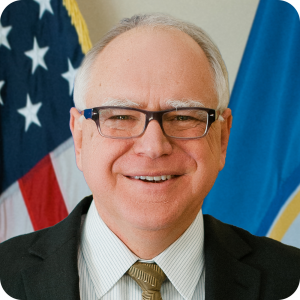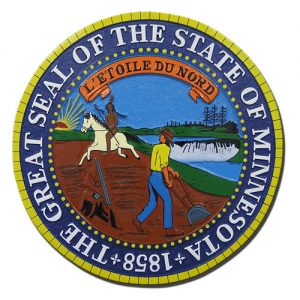4-6-2020: MN COVID-19 Update from Governor Tim Walz and MDH
MN COVID-19 Update: April 6, 2020, Governor Tim Walz joins officials from Minnesota Department of Health (MDH), others to provide updates on Minnesota’s response to COVID-19.


Governor Tim Walz Update:
- MN vets impacted by COVID-19 can apply for federal grants
- Launched discrimination helpline, “way too many calls” regarding xenophobia and racism, especially aimed at Asian-American community says Walz. The helpline is 1-833-454-0148.
- Signed two executive orders, Executive Order 20-28 authorizes out-of-state mental health providers to provide telehealth services to Minnesota patients
- Executive Order 20-29 provides immediate relief to employers and unemployed workers during COVID-19 peacetime emergency. This should help cut down wait time “by months,” says Walz.
MN Dept. of Health Commissioner Jan Malcolm Update:
- 986 confirmed cases in Minnesota (280 in Hennepin County); 1.3 million cases globally, 350,000 cases in U.S.; 9,600 deaths in U.S., 3,000 in New York City area alone.
- 74 percent of cases in Minnesota are white, 6 percent black, 4 percent Asian (about 20 percent unknown or other combination of major categories)
- Minnesota cases increased by 51 since Sunday
- MN death toll now stands at 30 (an increase of one death since Sunday, a Ramsey County resident in long-term care facility)
- Median age of 30 Minnesotans who died from COVID-19 is 86
- Computer models now estimate that Minnesota will suffer 625 such deaths in the next four months (a downward revision from as many as 2,000 that was projected earlier)
- 115 people are hospitalized with COVID-19, 57 are in intensive care,
- State’s ventilator capacity has increased in recent days (now totals 2,442, with another 888 ordered), according to the state’s COVID-19 dashboard.
- 34 percent of cases are due to unknown sources within their communities, meaning that the virus is spreading widely in the state
- 33 long-term care facilities in Minnesota now have outbreaks
- Having facilities on this list: “It does not mean this facility is deficient in an any way or has done something wrong,” says Malcolm. “Our most-vulnerable residents are feeling the brunt of this virus,” she said.
- MDH expects many facilities to have cases, just like many workplace settings.
- On wearing masks: “People who are sick need to be staying home.” Masks don’t lessen directive. “These masks don’t protect the wearer,” only others. They are secondary protection. Primary protection is hand-washing and social distancing.
- Masks should not be N-95 masks needed by hospitals. Minnesotans can use cloth masks or other facial garment.
- If you’re experiencing a medical emergency, it’s important to call 911, just like you always have, says Malcolm.
MN DEED Commissioner Steve Grove:
- Minnesota processed more than 90% of unemployment applications
- 342,000 unemployment claims since March 16 (120,000 more applications in last three weeks than all of 2019)
- Waiting for guidance/go-ahead from federal government to issue payments
- Trying to streamline call-wait times
- 50 new staff members helping to manage calls
- uimn.org offers help helpful unemployment information
- Thanked business community, mentioned Tattersall Distilling, Du Nord Craft Spirits and Brother Justus Whiskey Company for making hand sanitizer. Allhandsmn.org is way to receive hand sanitizer if needed.
MN Homeland Security and Emergency Mgmt. Dir Joe Kelly:
- Our team is in close contact with FEMA
- “I’m confident they will be there for us again,” says Kelly.
- Federal assistance is not limited to a dollar amount, but determined by eligibility of the costs
MN Dept. of Veterans Affairs Commisioner Larry Herke:
- Grants program provides $6.2 million to eligible Minnesota veterans impacted by COVID-19
- Applications for grants start today
- To apply: Minnesotaveteran.org/covidrelief
Q&A Session
- Question: what about state’s financial position, any projections? State had $1.3 billion surplus pre-COVID-19. Can’t use deficit spending for stimulus package. Answer: Relatively healthy financial shape before the novel coronavirus, says Walz. “We want to get back to business as quickly as possible,” he said. Science and virus dictates timeline. Hopeful on antibody and rapid result disease testing to allow businesses to reopen. “This is going to digging out after a long winter. This is going to take a while,” says Walz.
- Minnesota infection rate is the lowest in the country, says Walz. That’s 17 per 100,000. “Still don’t have clear picture,” he said.
- Question: On identifying cases by race: Answer: “It’s important to get as much specificity as we can,” says Malcolm. There’s a signification portion that didn’t reveal race.
- Question: What about extension of stay-at-home order? Answer: “We want to make sure we are deliberate in our thinking,” says Walz. We will be going through a sector-by-sector walk-through at 4:30 p.m. Monday. Could have better picture mid-week. Trying to determine what worked and what didn’t work with stay-at-home. “We’re not so good in social distancing in recreation areas right now,” says Walz.
- Question: What is data driving your decisions? Answer: Governor: using multiple models. CDC models, Minnesota created own models. Some of this is proprietary information. “We’re trying to be as transparent as possible,” says Malcolm.
- Question: Why not keep stay-at-home order if it’s working (if it gets to that)? How do you know when to pull back?: Answer: Are there things we can do that would allow some economic activity that wouldn’t increase transmission. Trying to strike a balance, says governor.
- Question: On criticism of models and transparency. Answer: “Trust me, no one wants to run a deficit as governor.” It was a brand-new pandemic. Getting on the front of it, has avoided catastrophe, says Walz. “It appears to be moving in the right direction,” he said.
- Question: Latest on shortage of beds and hospital prep? Answer: “We’ve got work to do,” says Walz. “I worry a little bit.” Ending up with more beds and PPE is much better scenario than too few, he said. “Hospitals are doing incredible work,” says Malcolm. Hospitals identifying beds that could be used for ICUs. Still awaiting the surge with limit on equipment, says Malcolm.
- Question: Social ramifications of COVID-19 and trying to prevent unintended consequences from state orders? Answer: Governor: we’re certainly watching numbers on domestic violence, suicides, etc. “It’s a big part of the decision-making.”
- Question: Message on playgrounds and parks closing as temps warm up? Answer: There has to be a buy-in from the public that this is saving lives, says Walz. This is an issue we’ve spent a lot of time on. The No. 1 one thing we get is people congregating too closely in outdoor settings, he said.
 How COVID-19 is impacting our community
How COVID-19 is impacting our community
Find all of our latest COVID-19 stories here
Brooklyn Center | Brooklyn Park | Crystal | Golden Valley | Maple Grove | New Hope | Osseo | Plymouth | Robbinsdale


